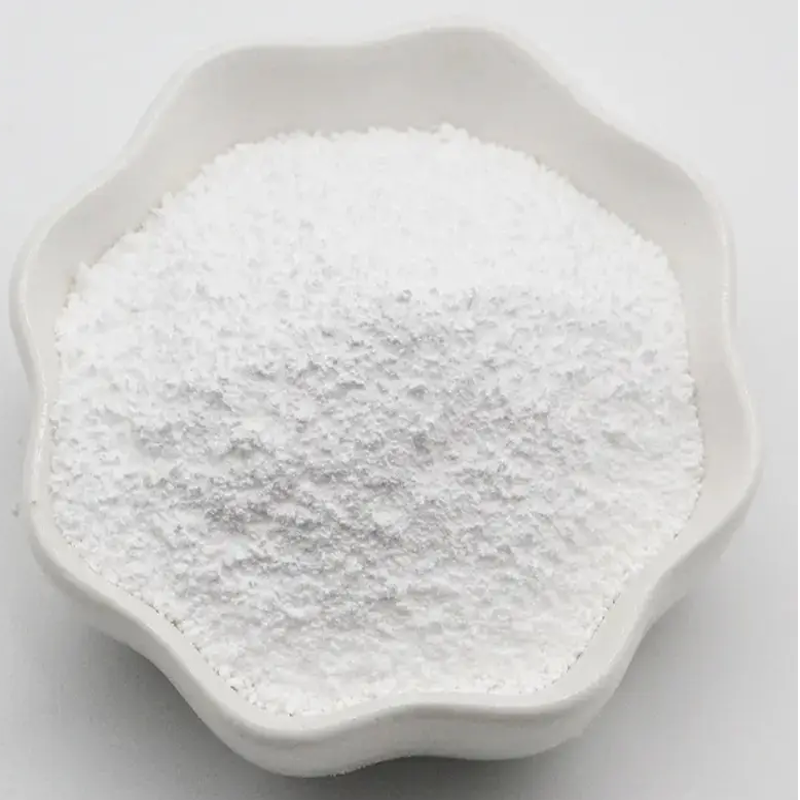-
Categories
-
Pharmaceutical Intermediates
-
Active Pharmaceutical Ingredients
-
Food Additives
- Industrial Coatings
- Agrochemicals
- Dyes and Pigments
- Surfactant
- Flavors and Fragrances
- Chemical Reagents
- Catalyst and Auxiliary
- Natural Products
- Inorganic Chemistry
-
Organic Chemistry
-
Biochemical Engineering
- Analytical Chemistry
- Cosmetic Ingredient
-
Pharmaceutical Intermediates
Promotion
ECHEMI Mall
Wholesale
Weekly Price
Exhibition
News
-
Trade Service
The global COVID-19 outbreak caused by the new coronavirus (SARS-CoV-2) seriously threatens human health
.
SARS-CoV-2 has a multi-organ tropism and can cause fever, cough, severe respiratory disease and multiple organ failure
.
The host cell receptor is a key determinant of virus tropism and disease
.
But so far, the only widely recognized SARS-CoV-2 receptor is ACE2
.
The expression of ACE2 is relatively limited in the gastrointestinal tract, kidney, heart and other organs, which is difficult to explain the multi-organ tropism of SARS-CoV-2
.
In addition, SARS-CoV and SARS-CoV-2 both use ACE2 as the main invasion receptor, but the two show significant differences in phagocytic and clinical characteristics, which all indicate the existence of other receptors to mediate SARS-CoV-2 Interaction with the host
.
Therefore, systematic analysis of the host cell receptor lineage of SARS-CoV-2 and searching for unknown functional receptors play an important role in understanding the pathogenic mechanism of SARS-CoV-2 and drug development
.
On November 26, 2021, the team led by Lu Zhigang/Luo Min from the Institute of Biomedical Sciences of Fudan University, and the team of Academician Xu Guoliang, the team of Fudan University Xie Youhua, the team of Gaodong and Zhao Yun of the Center for Excellence in Molecular Cell Science of the Chinese Academy of Sciences, etc.
Cell Research magazine published a research paper titled: Receptome profiling identifies KREMEN1 and ASGR1 as alternative functional receptors of SARS-CoV-2, reporting the interaction receptor lineage between SARS-CoV-2 and the human host, and discovering a new coronavirus Multiple new functional receptors
.
Based on the cell-level ligand-receptor interaction research method, the research team established a genome-wide secretomics interaction screening system; this system maintains the full length and function of membrane proteins and can target targets under physiological conditions.
The receptor or ligand of the protein is screened at the whole genome level
.
A total of 12 receptor-like factors including ACE2 were obtained in the study
.
These factors specifically bind to SARS-CoV-2 S protein, with Kd ranging from 12.
4-525.
4nM
.
ACE2 only binds to the RBD domain of S protein, but most other factors can interact with multiple domains of S protein at the same time.
Among them, RBD and NTD are the main binding sites, suggesting that these two domains are in SARS-CoV-2 -Both have an important role in host interactions
.
Among the screened receptor factors, ASGR1 and KREMEN1 can directly mediate SARS-CoV-2 infection independent of ACE2, but have no effect on SARS and MERS infections
.
ASGR1 and KREMEN1 can interact with multiple S protein domains, among which KREMEN1 can bind RBD, NTD and S2, while ASGR1 binds RBD and NTD; the two have no specific binding to SARS S protein
.
Therefore, ASGR1 and KREMEN1 are the specific receptors of SARS-CoV-2, which explains to some extent the reasons why SARS-CoV-2 is more complicated in terms of tropism and clinical manifestations.
The body is likely to be a potential target of SARS-CoV-2 neutralizing antibodies targeting NTD epitopes
.
Researchers collectively called ACE2, ASGR1, and KREMEN1, which can mediate the invasion of SARS-CoV-2, as ASK receptors, and found the physiology from the cell line level, the single-cell sequencing level of the upper respiratory tract of patients with COVID-19, and the level of infection in the patient’s tissues.
Under these conditions, there are two infection pathways, both dependent and independent of ACE2, and ASGR1 and KREMEN1 play an important role in the latter pathway; SARS-CoV-2 uses different receptors to invade different types of cells, and ASK receptors together constitute The molecular basis of SARS-CoV-2 cell and tissue tropism
.
Subsequently, the researchers developed blocking monoclonal antibodies of ASGR1 and KREMEN1, which can specifically inhibit S protein binding and virus invasion mediated by corresponding receptors
.
These antibodies can significantly inhibit virus infection of human lung organoids, indicating that SARS-CoV-2 infection mediated by ASGR1 and KREMEN1 also plays an important role in lung organoids
.
More importantly, compared to any single-targeting antibody, the cocktail antibody targeting ACE2/ASGR1/KREMEN1 at the same time can more significantly inhibit the neocoronavirus infection of lung organoids
.
This study identified the cell receptor lineages that SARS-CoV-2 specifically interacts with humans.
These receptor molecules exhibit different S protein binding characteristics, as well as the diversity of biological functions and tissue expression distribution; it also proves ASGR1 and KREMEN1 are new functional receptors for SARS-CoV-2, which play an important role in viral infections that do not rely on ACE2; SARS-CoV-2 uses different ASK receptors to invade different cells, while targeting to block ASK The cocktail of antibodies that bind the receptor to the S protein can more significantly inhibit viral infections at the level of lung organoids
.
Different receptors or receptor-like molecules are likely to interact with SARS-CoV-2 under different environmental or physiological conditions, triggering different signals, and ultimately leading to virus infection and host immune response, etc.
, thereby promoting the pathogenicity of the virus.
Disease process
.
This study provides important information and clues for the explanation and in-depth understanding of the tropism and pathogenic mechanism of SARS-CoV-2.
It also provides new targets and treatment strategies for drug development against COVID-19
.
Original link: https:// open to reprint, welcome to forward to the circle of friends and WeChat group
.
SARS-CoV-2 has a multi-organ tropism and can cause fever, cough, severe respiratory disease and multiple organ failure
.
The host cell receptor is a key determinant of virus tropism and disease
.
But so far, the only widely recognized SARS-CoV-2 receptor is ACE2
.
The expression of ACE2 is relatively limited in the gastrointestinal tract, kidney, heart and other organs, which is difficult to explain the multi-organ tropism of SARS-CoV-2
.
In addition, SARS-CoV and SARS-CoV-2 both use ACE2 as the main invasion receptor, but the two show significant differences in phagocytic and clinical characteristics, which all indicate the existence of other receptors to mediate SARS-CoV-2 Interaction with the host
.
Therefore, systematic analysis of the host cell receptor lineage of SARS-CoV-2 and searching for unknown functional receptors play an important role in understanding the pathogenic mechanism of SARS-CoV-2 and drug development
.
On November 26, 2021, the team led by Lu Zhigang/Luo Min from the Institute of Biomedical Sciences of Fudan University, and the team of Academician Xu Guoliang, the team of Fudan University Xie Youhua, the team of Gaodong and Zhao Yun of the Center for Excellence in Molecular Cell Science of the Chinese Academy of Sciences, etc.
Cell Research magazine published a research paper titled: Receptome profiling identifies KREMEN1 and ASGR1 as alternative functional receptors of SARS-CoV-2, reporting the interaction receptor lineage between SARS-CoV-2 and the human host, and discovering a new coronavirus Multiple new functional receptors
.
Based on the cell-level ligand-receptor interaction research method, the research team established a genome-wide secretomics interaction screening system; this system maintains the full length and function of membrane proteins and can target targets under physiological conditions.
The receptor or ligand of the protein is screened at the whole genome level
.
A total of 12 receptor-like factors including ACE2 were obtained in the study
.
These factors specifically bind to SARS-CoV-2 S protein, with Kd ranging from 12.
4-525.
4nM
.
ACE2 only binds to the RBD domain of S protein, but most other factors can interact with multiple domains of S protein at the same time.
Among them, RBD and NTD are the main binding sites, suggesting that these two domains are in SARS-CoV-2 -Both have an important role in host interactions
.
Among the screened receptor factors, ASGR1 and KREMEN1 can directly mediate SARS-CoV-2 infection independent of ACE2, but have no effect on SARS and MERS infections
.
ASGR1 and KREMEN1 can interact with multiple S protein domains, among which KREMEN1 can bind RBD, NTD and S2, while ASGR1 binds RBD and NTD; the two have no specific binding to SARS S protein
.
Therefore, ASGR1 and KREMEN1 are the specific receptors of SARS-CoV-2, which explains to some extent the reasons why SARS-CoV-2 is more complicated in terms of tropism and clinical manifestations.
The body is likely to be a potential target of SARS-CoV-2 neutralizing antibodies targeting NTD epitopes
.
Researchers collectively called ACE2, ASGR1, and KREMEN1, which can mediate the invasion of SARS-CoV-2, as ASK receptors, and found the physiology from the cell line level, the single-cell sequencing level of the upper respiratory tract of patients with COVID-19, and the level of infection in the patient’s tissues.
Under these conditions, there are two infection pathways, both dependent and independent of ACE2, and ASGR1 and KREMEN1 play an important role in the latter pathway; SARS-CoV-2 uses different receptors to invade different types of cells, and ASK receptors together constitute The molecular basis of SARS-CoV-2 cell and tissue tropism
.
Subsequently, the researchers developed blocking monoclonal antibodies of ASGR1 and KREMEN1, which can specifically inhibit S protein binding and virus invasion mediated by corresponding receptors
.
These antibodies can significantly inhibit virus infection of human lung organoids, indicating that SARS-CoV-2 infection mediated by ASGR1 and KREMEN1 also plays an important role in lung organoids
.
More importantly, compared to any single-targeting antibody, the cocktail antibody targeting ACE2/ASGR1/KREMEN1 at the same time can more significantly inhibit the neocoronavirus infection of lung organoids
.
This study identified the cell receptor lineages that SARS-CoV-2 specifically interacts with humans.
These receptor molecules exhibit different S protein binding characteristics, as well as the diversity of biological functions and tissue expression distribution; it also proves ASGR1 and KREMEN1 are new functional receptors for SARS-CoV-2, which play an important role in viral infections that do not rely on ACE2; SARS-CoV-2 uses different ASK receptors to invade different cells, while targeting to block ASK The cocktail of antibodies that bind the receptor to the S protein can more significantly inhibit viral infections at the level of lung organoids
.
Different receptors or receptor-like molecules are likely to interact with SARS-CoV-2 under different environmental or physiological conditions, triggering different signals, and ultimately leading to virus infection and host immune response, etc.
, thereby promoting the pathogenicity of the virus.
Disease process
.
This study provides important information and clues for the explanation and in-depth understanding of the tropism and pathogenic mechanism of SARS-CoV-2.
It also provides new targets and treatment strategies for drug development against COVID-19
.
Original link: https:// open to reprint, welcome to forward to the circle of friends and WeChat group







